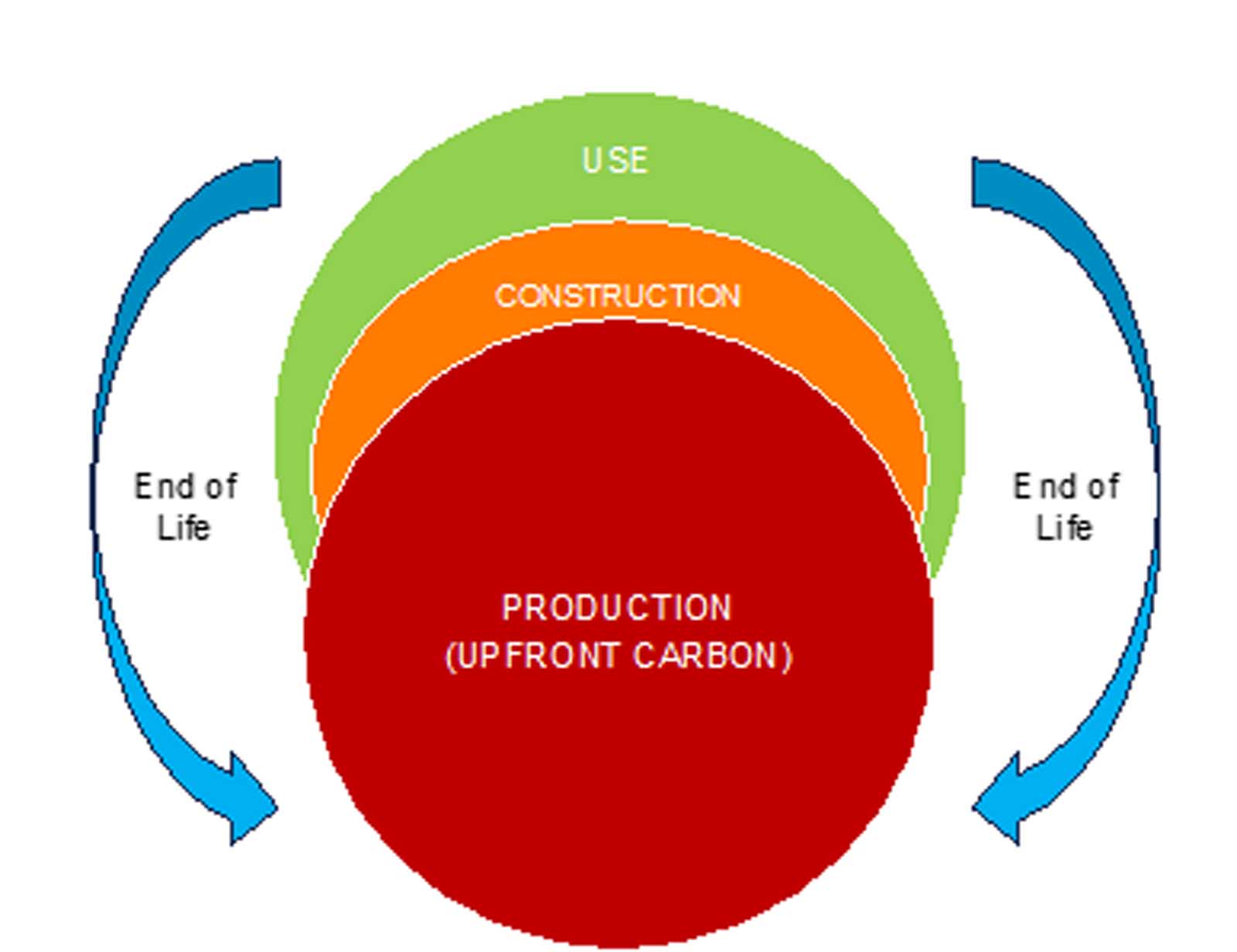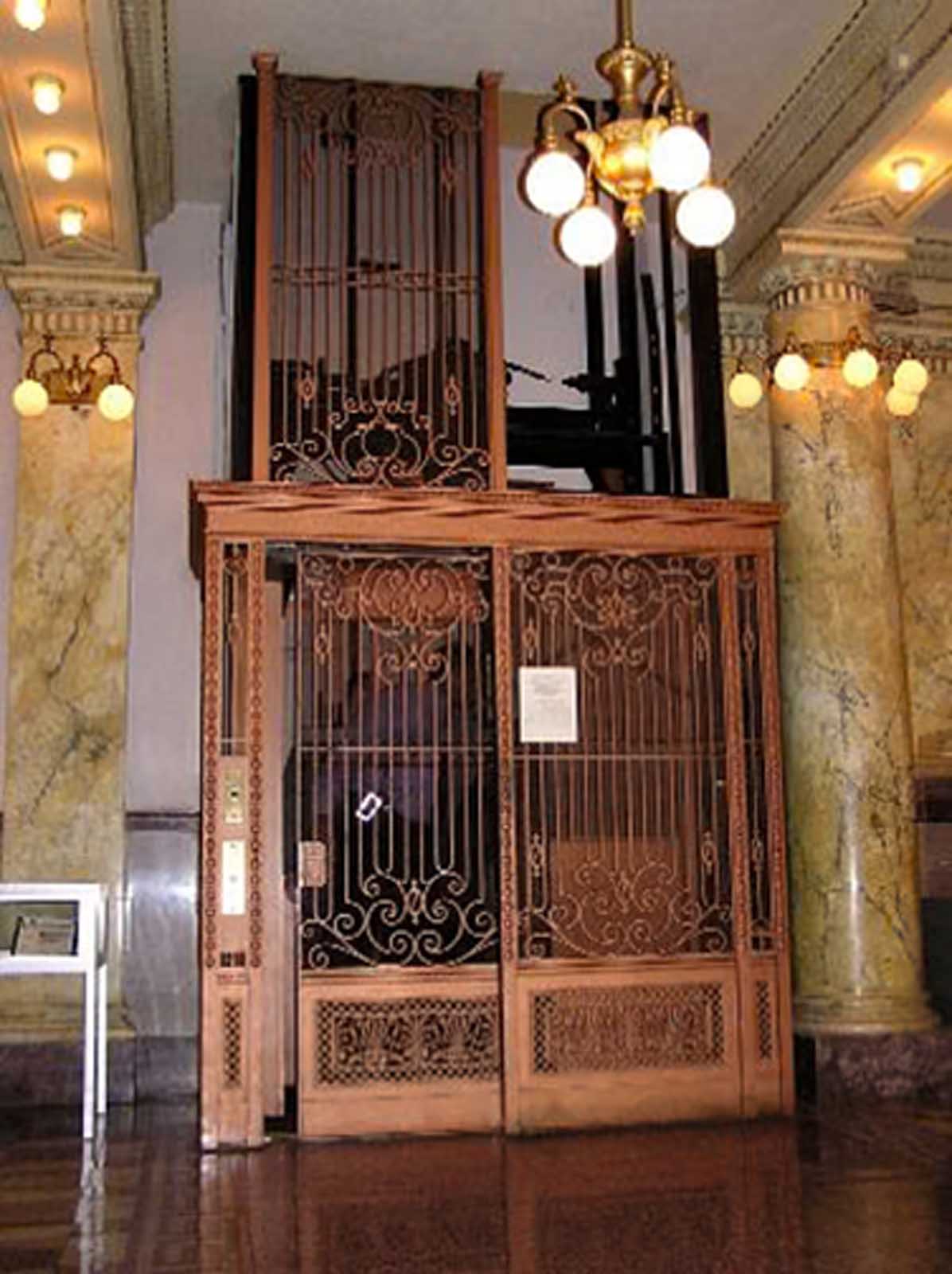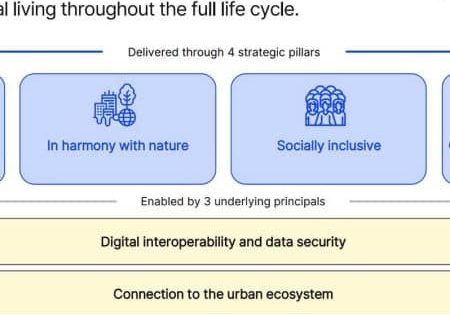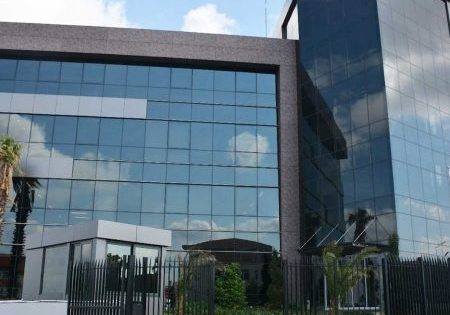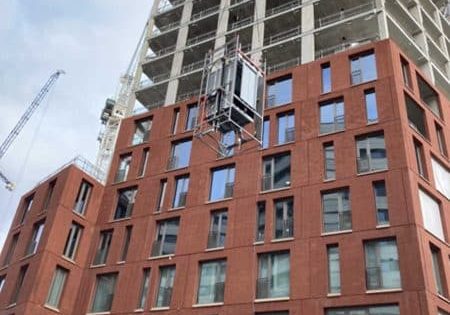Sustainability in the Elevator Industry – Impact Review
Feb 1, 2024
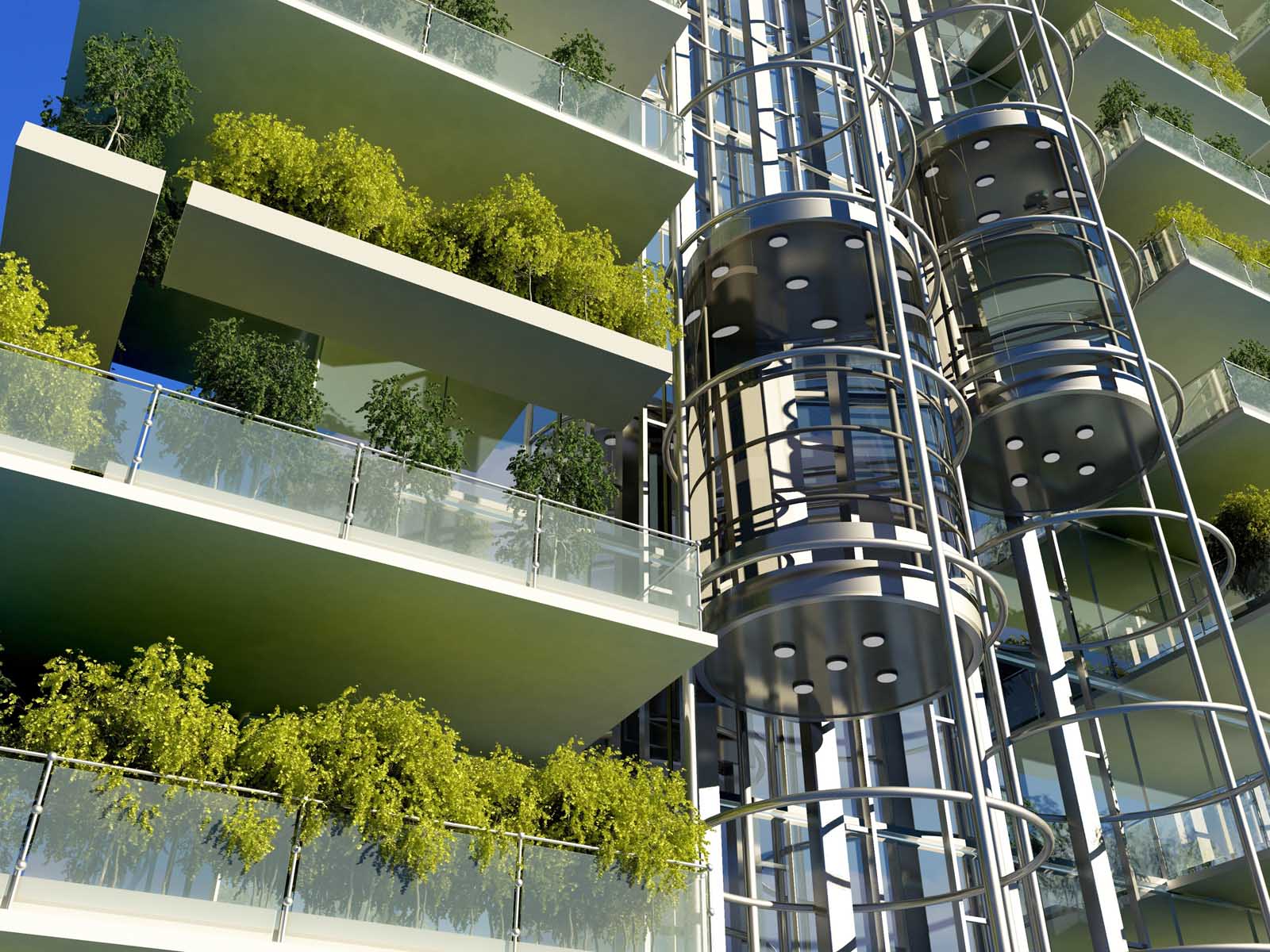
by TAK Mathews
This paper was presented at the 2023 International Elevator & Escalator Symposium in Edinburgh, Scotland.
Abstract
For decades, the world has recognized climate change and Earth’s depleting resources as a matter of concern. In 1987, the United Nations defined sustainability as “meeting the needs of the present without compromising the ability of future generations to meet their own needs.” With centuries of unabated abuse, climate change once considered a future risk is now a clear and present danger for not just future generations, but even for the current one. Consequentially, sustainability has become a global buzzword.
The elevator industry, too, has been quick to embrace the sustainability drive. Sustainability and green are the primary drivers for current elevator technological innovations. Almost every sales and marketing focus is on the sustainability initiatives of individual companies and their products.
This paper will research some of the current sustainability innovations and initiatives of the elevator industry and study their impact.
Introduction
“The Earth will not continue to offer its harvest, except with faithful stewardship. We cannot say we love the land and then take steps to destroy it for the sake of future generations.” — John Paul II[13]
The BBC News Climate & Science Data Journalism team on September 17, 2023,[8] reported, “The sea-ice surrounding Antarctica is well below the previous recorded winter level, satellite data shows, a worrying new benchmark for a region that once seemed resistant to global warming.”
Earth as we know it is facing an environmental crisis. What was considered a future possibility is knocking down our doors right now. Barring a few who refuse to recognize the crisis, sustainability is a buzzword for the world.
Sustainability and the Built Environment
With estimates of more than 40%, the built environment is a major contributor to the crisis. Per the World Green Building Council,[18] “Worldwide, buildings are responsible for around 40% of energy and process-related CO2 emissions, 50% of all extracted materials, 33% of water consumption and 35% of generated waste.” With such a significant impact, it is critical that the built environment plays its part in delivering the transformative change needed to decarbonize our global economy. During his presentation at the Conference on Climate Resilient Built Environment in Mumbai, architect Sandeep Shikre[10] elaborated that concrete, steel and aluminum, which is mostly used in the built environment, accounted for 23% of total global emissions.
Sustainability and the E&E Environment
Overall, the elevator and escalator (E&E) industry has recognized its responsibility toward sustainability for some time. In a paper titled, “Elevators Are Going Green,”[2] Bernhard writes “green vertical-transportation initiatives began as early as the 1990s.”
Schindler states, “Schindler Elevator Corp. is committed to conducting its business activities in harmony with society and the environment. Schindler’s products and services are designed to provide energy-efficient and eco-friendly options to architects, contractors, building owners and managers.” The newly branded TK Elevator declares, “Sustainability is an integral part of TK Elevator and our company strategy. It also determines how we work and shapes our corporate values. Being one of the world’s leading elevator companies, we are dedicated to driving innovation and the continuous improvement of our products and services, all in close partnership with our stakeholders.”
This paper reviews some of the newer sustainability technologies and initiatives that the E&E industry has been adopting.
This paper will leave the reader with more questions than answers.
1. Some Sustainability Terms Relevant to the Built Environment
It is essential to understand the relevant sustainability terms and measures to better understand how E&E industry initiatives impact sustainability. The terms and definitions in this chapter are the basis on which E&E industry sustainability initiatives will be reviewed.

i. Building Life Cycle (as defined by the World Green Building Council)[17]
a. Whole life carbon means emissions from all lifecycle phases, encompassing both embodied and operational carbon (A1 to C4) together.
b. Embodied carbon means the carbon emissions associated with materials and construction processes throughout the whole lifecycle of a building or infrastructure.
c. Upfront carbon means the emissions caused in the materials production and construction phases (A1- A5) of the lifecycle before the building or infrastructure begins to be used. In contrast to other categories of emissions listed here, these emissions have already been released into the atmosphere before the building is occupied or the infrastructure begins operation.
d. Operational carbon means the emissions associated with energy used (B6) to operate the building or in the operation of infrastructure.
e. End-of-life carbon means the carbon emissions associated with deconstruction/demolition, transport from site, waste processing and disposal phases of a building or infrastructure’s lifecycle that occur after its use (C1 to C4).
f. Beyond the lifecycle (D) means carbon emissions or emissions savings incurred due to reuse or recycling of materials or emissions avoided due to using waste as a fuel for another process.
ii. Linear Economy vs. Circular Economy
The Contech blog[13] states that the fundamental difference between these two economic models is that while the linear economy follows the “take-make-waste” step plan, the circular economy follows the 3R approach of “reduce, reuse and recycle,” completely removing waste from the equation. The circular and the linear system differ from each other regarding how value is created or maintained. The traditional linear model has short-term revenue in mind and focuses only on profitability, creating value through mass production and sales. The circular approach, on the other hand, has a long-term vision that also considers sustainability throughout a product’s lifecycle. Through the update, repair, and regeneration of products, longer lifecycles can be achieved.
iii. Environmental Product Declaration (EPD)
Iotti et. Al.[3] defines EPD as a voluntary document with which a company or organization transparently discloses the environmental impact of the life of its products or services.
2. ACVVF
One of the first real initiatives by the E&E industry toward sustainability was the move toward ACVF drives for elevators. In contrast to the power-hungry ACVV elevators of the 1980s and 1990s, ACVF drives drew much less electricity.
It is now rare that, unless it is a low-speed elevator with a fewer number of stops, an elevator will be without a VF drive.
3. Regeneration
Along with ACVF drives, regeneration capabilities ensured that energy that would normally be dissipated as heat could be converted back into usable energy.
There is no doubt that regeneration will yield power savings. But, power saving claims tend to get exaggerated. There are sales arguments out in the market that claim 60% power savings with regenerative drives. While, theoretically, it is possible to improve even on this 60% claim — with traffic consisting solely of an empty car going up and a full car traveling down — it is a fact that regeneration is dependent on the actual traffic pattern of the building. In many cases, power savings claims are highly overstated.
4. Machine-Room-Less Elevators (MRLs)
The first MRL was launched at the end of the last century as an alternative to hydraulic elevators and low-rise applications.[5] The advent of MRLs has been responsible for innovations supporting sustainability.
However, contrary to the general impression being reinforced through a sustained hard sales pitch, Andrew and Kaczmarczyk[1] point out, “We must always bear in mind that an MRL system is still an elevator, and that the majority of the equipment is absolutely the same as would be found in any other traction elevator system. All the MRL innovations can be incorporated in the conventional machine room elevator, and any benefits beyond construction of a machine room are not exclusive to MRLs.”
Yet, MRLs are now touted as the only elevator innovation to pave the way for sustainability in the E&E sector.
TechSci[15] writes, “Manufacturers redesigned motors and all other equipment housed in a machine room to fit into the hoistway, making some space-saving improvements to eliminate the need to build and supply energy.” Debbie Sniderman[11] states,“ The most energy efficient types of elevators are MRL traction elevators. Manufacturers redesigned the motors and all of the other equipment normally housed in a machine room above conventional elevators to fit into the hoistway. These space-saving improvements eliminate the need to build and supply energy to a machine room and consume significantly less energy than the larger versions previously used.”
Arguments and sales pitches adopted by a number of companies to push the MRL product are highly debatable. The sales arguments defy technical logic and reason, barring the comparison to hydraulic elevators to some extent. On the other hand, with MRL load limitations, higher-duty applications can only be addressed by a regular machine-room elevator or a hydraulic elevator.
Even the “oil is environment unfriendly” argument for hydraulic elevators can be addressed with the availability of environmentally friendly biodegradable hydraulic fluids. The “higher power requirement” argument can be countered with the better technologies available today. Patrao et. al.[7] reports, “The most recent hydraulic systems have now incorporated variable voltage variable frequency drives (VVVF) and an accumulator that acts as a hydraulic counterweight. The energy performance has dramatically been improved with these new developments.”
Unfortunately, the falsehood that MRLs are the only way forward for environmental sustainability has become a prevalent narrative. Further, the narrative fails to elaborate on the limitations and operational issues associated with MRLs detailed by this author.[5]
5. Permanent Magnet Gearless Machines
MRLs pushed the need for more compact machines to be accommodated within the hoistways. This brought about the advent of permanent magnet (PM) gearless machines, which are gradually becoming the standard for most elevators.
While the energy consumption advantage of a PM gearless machine over an induction gearless machine can’t be challenged, the efficiency advantage between PM gearless machines and induction machines ranges between 5% to 10%, with PM machines being more efficient. Hanejko[14] states PM machines have an efficiency of 97.5% against the efficiency of 90% to 93% of an induction motor.
However, the environmental impact of mining rare earth minerals requires investigation.
The title of Michael Standaert’s report,[12] “China Wrestles with the Toxic Aftermath of Rare Earth Mining,” highlights the issue. The Guardia[16] reports, “The transition to climate neutrality cannot mean replacing a reliance on dirty fossil fuels with a dependence on raw materials, the extraction of which leaves large tracts of the earth uninhabitable.” Nayar[6] writes, “Overall, for every ton of rare earth, 2,000 t of toxic waste are produced.”
China remains the world leader in rare earth mining. As per Nayar[6], while China has only 35% of the rare earth mineral reserves, it has managed to achieve dominance “in large part because of lax environmental regulations. Low cost, high pollution methods enabled China to outpace competitors and create a strong foothold in the international REE (rare earth elements) market.”
Can the 5% to 10% claimed energy savings compensate for the environmental impact of the mining of rare earth minerals? Has the E&E industry done an adequate cost/benefit analysis to justify the shift toward PM machines as standard, even for projects where machine size is not critical? Is the elimination of the machine room commiserate with the environmental impact of the rare earth minerals required for miniaturizing the machine?
Iotti’s[3] study states, “The environmental product declaration (EPD) is a voluntary document with which a company or organization transparently discloses the environmental impact of the life of its products or services. It is not only about energy consumption. In this way, a product’s entire environmental sustainability is assessed and declared.” Iotti points out that most EPDs have been issued for MRLs.
However, a cursory review of some of the EPDs available in the public domain reveals that the declarations do not refer to rare earth minerals and the environmental impact at all. A further detailed study of all EPDs is required to verify whether the environmental impact of PMs is recognized at all.
The other matter to be considered for PMs is the recycling approach being adopted by the E&E industry. The author’s discussion with various E&E companies as well as machine manufacturers indicates that recycling and disposing of PMs is still a grey area. While some from the E&E industry opined that they had a recycling process for PMs, none could provide details on the process or methodology. In fact, one response was that they had a tie-up with a vendor who was expected to recycle/dispose of PMs in an environmental friendly manner as per company policy.
While recycling is possible, the process of separating the elements is not that easy. The CEPS In-Depth Analysis[9] recommends that the European Union set recycling quotas and targets, as well as provide financial support to establish recycling processes and facilities.
Perhaps this is something that the E&E industry needs to first establish and adopt before pursuing the current indiscriminate shift to PM machines.
6. Coated Suspension Media
Another material innovation that was brought about with the advent of MRLs is coated suspension media for elevators, which started with coated steel belts. Experiments with aramid ropes were abandoned after it was proved that field reliability was suspect.
While originally the coated steel belt was seen as way to reduce the sheave diameter and machine size and thereby the hoistway size, in time, sales arguments evolved to cover safety and reliability and extended to environment benefits, among others. Coated steel belts are now joined by coated steel ropes.
Unlike regular steel ropes, it is impossible to inspect the steel wires within the polyurethane coating of coated suspension media. Additional hardware devices are required to monitor the status of strands that are not visible to the naked eye.
The environmentally friendly argument for coated suspension media is that, unlike regular steel ropes, coated steel suspension media do not require periodic lubrication.
On the other hand, the question that needs to be raised regards the environmental impact of the polyurethane coating. Liang et. al.[4] states, “Polyurethane poses environmental and human health concerns at various points across its life cycle.” The report goes on to state that polyurethane can be recycled, however only to some extent.
The question that then needs to be asked is how effective the E&E industry is in recycling the polyurethane coating of the coated suspension media or whether it is being disposed of in landfills. Would the cost of separating the polyurethane coating from the steel cords be economical to make the recycling of polyurethane viable?
To justify the stated environmental benefits of coated suspension media, the E&E industry must quantify the environmental impact of the light lubrication required for the traditional steel ropes vis-à-vis the impact of the polyurethane used for coated suspension media.
The other argument — that coated steel belts have a better life than traditional steel ropes — also needs to be verified in the actual field environment and over a longer time frame.
7. Cost Reduction Vs. Sustainability
While the E&E industry pursues sustainability initiatives, actions targeting cost reduction negate these initiatives in one way or another. For instance, the shift to concrete counterweights from cast iron counterweights is one such initiative. While cast iron can be recycled endlessly, concrete has limited recyclability.
The shift away from non-steel spring buffers helps reduce required pit depths. However, since these alternatives have fewer recyclable options, this shift does little for sustainability. Meanwhile, the reduced pit makes it a little more unsafe for the mechanic.
However, the change in the life expectancy of elevators is possibly the most telling regarding where the cost reduction objective trumps sustainability objectives. This is discussed in the next chapter.
8. Life Expectancy of Elevators
The World Green Building Council[18] states that features of a sustainable built environment include the need to regenerate resources and advance circularity through minimizing material use and waste through a circular economy, with a focus on asset reuse and retrofit.
How does the E&E industry stack up in meeting this critical requirement?
The PRODUCTION (UPFRONT CARBON) phase of the elevator life cycle contributes the maximum to its built environment whole life carbon. It is therefore but natural that the upfront carbon utility must be maximized.
When your author joined the E&E industry three-and-a-half decades ago, the standard refrain used to be, “Our equipment will outlive your building.”
India’s oldest elevator, installed in 1892, has been modernized twice — first in 1969 and a second time in 2010 — and stands as testimony to the ever and a day design basis of older elevators.
In contrast, new age elevators are coming up for replacement in 15 years or fewer.
A poll (326 respondents primarily from North America) indicates that 94% believe that pre-2000 elevators had a much longer usable and safe life than elevators being installed in this century.
A further detailed opinion survey that was conducted (448 global respondents) indicates that the majority believe that neo-elevators are being designed for a shorter life. The figures are self-explanatory and stark.
During a recent discussion, John Koshak, a long-term active member of the American code committee, revealed a proposal to formalize the design life expectancy of elevators to 15 years. A new lift act being introduced in India considers establishing a maximum life of 20 years for elevators, after which they must be replaced.
What does this trend do to the sustainability initiatives of the elevator industry? The significantly lower design life (and thereby resultant life) of modern elevators, while good for business, negates most of the sustainability initiatives of the E&E industry.
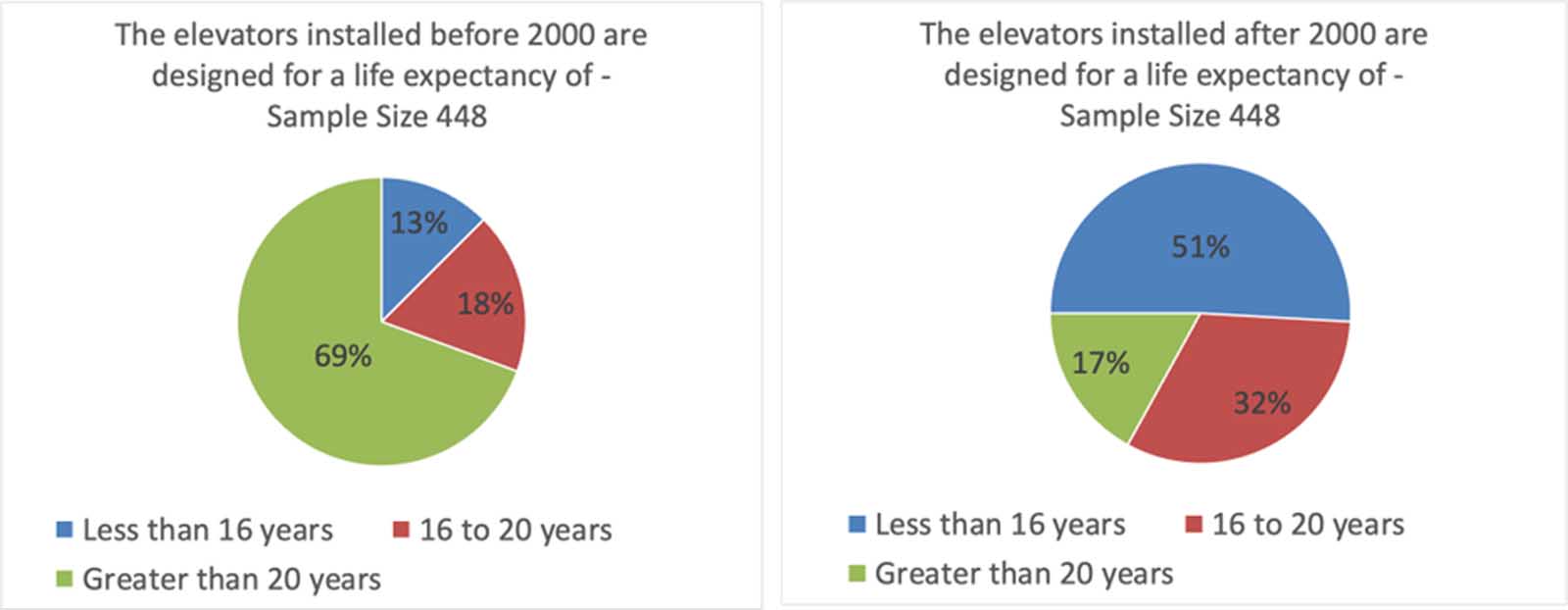
Conclusion
The World Green Building Council in its report titled “Bringing Embodied Carbon Upfront”[17] points out that upfront carbon emissions will be responsible for half the entire carbon footprint of new construction between now and 2050. The report goes on to state that efforts must be rapidly increased to tackle embodied carbon emissions.
The sustainability initiatives of the E&E industry are majorly, if not totally, focused on the operational carbon (B6) (refer to Figure 1) aspect of the elevator lifecycle. On the other hand, major carbon emissions are at the upfront phase of the project.
If E&E industry sustainability initiatives are to be meaningful and really yield results, the focus must shift to a balanced and measured approach through the entire lifecycle of the elevator.
References
1. Andrew J P et. al. (2011) Systems Engineering of Elevators, Elevator World Inc, Mobile, Alabama
2. Bernhard, Adrienne (2018) “Elevators Are Going Green,” Smithsonian Magazine
3. Iotti, Giuseppe (2022) “Environmental Impact of Lifts: the EPD,” Elevator World Europe, November-December 2022
4. Liang, Chao et. al (2021) “Material Flows of Polyurethane in the United States,” Environmental Science & Technology 2021 55, 14215 – 14224
5. Mathews, TAK (2022) “MRLs, A Practical Alternative to MRs?,” Elevator Technology 22, Proceedings of ELEVCON, Berlin 2018
6. Nayar, Jaya (2021) “Not So ‘Green’ Technology: The Complicated Legacy of Rare Earth Mining,” Harvard International Review
7. Patrao, Carlos et. al. (2009) Energy Efficient Elevators and Escalators, ECEEE 2009 Summer Study
8. Rannard, Georgina et. al. (2023) “Antarctic Sea-Ice at ‘Mind Blowing’ Low Alarms Experts,” BBC News
9. Rizos, Vaseileios et.al. (2022) “Developing a Supply Chain for Recycled Rare Earth Permanent Magnets in the EU – Challenges and Opportunities,” CEPS IN-DEPTH ANALYSIS
10. Shikre, Sandeep (2023) “Climate Resilient Built Environment,” presentation at the Conference on Climate Resilient Built Environment held by the Forum of Critical Utility Services (FOCUS)
11. Sniderman, Debbie (2012) “Energy Efficient Elevator Technologies,” The American Society of Mechanical Engineers
12. Standaert, Michael (2019) “China Wrestles with Toxic Aftermath of Rare Earth Mineral Mining,” Yale Environment 360, Yale School of the Environment
13. contec.tech/linear-economy-vs-circular-economy-differences-how-to-make-the-change/#:~:text=The%20fundamental%20difference%20between%20these,removing%20waste%20from%20the%20equation
14. horizontechnology.biz/blog/induction-vs-permanent-magnet-motor-efficiency-auto-electrification
15. techsciresearch.com/blog/rise-of-elevators-in-the-world-of-sustainability/154.html
16. theguardian.com/commentisfree/2022/aug/18/the-guardian-view-on-rare-earths-mining-them-cant-cost-the-earth
17. worldgbc.s3.eu-west-2.amazonaws.com/wp-content/uploads/2022/09/22123951/WorldGBC_Bringing_Embodied_Carbon_Upfront.pdf
18. worldgbc.org/what-is-a-sustainable-built-environment/
Get more of Elevator World. Sign up for our free e-newsletter.
